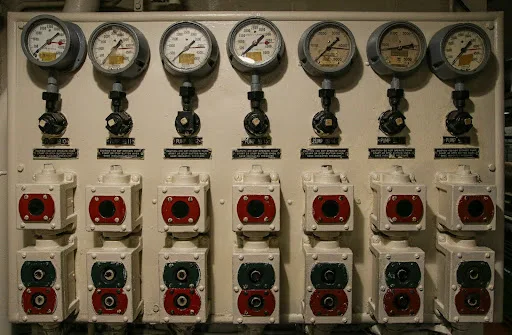How Calorimeters Promote Safety in Chemical Research
Chemical research is where innovation originates, but also where danger lurks. Any reaction, be it small-scale in a university lab or large-scale in industry, is a source of danger if not controlled. By observing heat evolved or absorbed from reactions, researchers are given information that directly increases laboratory safety and reduces the hazards of uncontrolled events. Now, calorimeters—from high-tech isothermal equipment to the pioneering bomb calorimeter — lie at the center of discovering and managing such dangers.
In reality, most calorimetry applications are not just a question of taking measurements to report; they are the line of defense in preventing accidents and ensuring safe operation for scientists and facilities.
The Hidden Dangers Inside Chemical Reactions
Chemical reactions are unpredictable. Minor experiments can generate runaway heat, unexpected gases, or unstable intermediates. Alone, these byproducts can be fire hazards, poisonous emissions, or pressure accumulation.
The challenge for scientists is that most of the dangers lie low until it’s too late. Small temperature or heat transfer differences normally result in far more devastating catastrophes down the road. Without monitoring systems, these signs are simple to miss. It’s because of this that adding calorimeters into chemical research isn’t just helpful — it’s imperative.
What Calorimetry Really Measures and Why It Matters
Essentially, calorimetry measures heat change in reactions. But its implications reach far beyond numbers. Through measuring thermal data, scientists can:
- Identify whether a reaction is endothermic or exothermic.
- Find onset points where reactions accelerate in an unpredictable way.
- Estimate worst-case release of energy.
- Validate reaction pathways and scalability before applying them on an industrial scale.
These findings bring calorimetry into a cornerstone of chemical reaction monitoring. Beyond the laboratory, sectors including pharmaceuticals, polymers, and energy rely on such findings to make safer process production and reduce hazards before scale-up.
From Early Detection to Risk Prevention
The power of calorimetry is not just in the quantification of data, but also in being able to forecast danger. As an example, if a calorimeter indicates that a reaction will emit more heat than anticipated, researchers can adjust conditions immediately, cooling rates or reagent concentration to prevent runaway peril.
In such instances, calorimetry applications enter the realm of real-time decision-making. Instruments like isothermal calorimeters or reaction calorimeters allow groups to run controlled experiments that simulate actual scenarios. Avoidance of runaway reactions, minimization of waste, and delivery of reproducible data are made easy with this forward-looking style.
IKA and others have advanced calorimeter technology to make it simpler to use and more precise so labs can establish safety-focused workflows without compromising productivity.
Ensuring Researchers and Facilities are Safe in the Field
Used on a regular basis, calorimetry is not a gadget — it’s an insurance policy. Scientists benefit by avoiding unexpected hazards, and plants reduce the risk of costly accidents or downtime.
By way of example, calorimeters help make safe laboratories through:
- Providing early warning of hazardous reaction conditions.
- Education g scale-up planning to prevent plant accidents.
- Reducing exposure risk to employees by predicting volatile behavior.
- Helping to comply with regulatory safety standards.
By incorporating calorimeters into standard procedures, organizations create an environment in which safety is not reactive but preventive.
Building a Culture of Safety Surrounding Calorimetry
It’s not only equipment that accomplishes safety; equipment is only so strong when paired with awareness and training. It’s more than gathering thermal information, but also understanding its significance. A culture of safety involves.
Practical steps to improve this culture are:
- Training staff to efficiently understand calorimetry results.
- Encouraging systematic application of calorimeters in day-to-day and high-risk reactions.
- Exchange of results among groups to increase total safety awareness.
- Continually improving procedures based on new calorimetric experience.
Accidents become less likely and research results more reliable when investigators and institutions prioritize safety in every step.
In conclusion
Calorimeters are more than lab equipment; they are basic equipment for protecting researchers, equipment, and the integrity of chemical research. By revealing hidden dangers, providing early warning, and promoting safer procedures, they are the standard against which lab techniques are measured today.
Both simple equipment, like the bomb calorimeter, and advanced digital technology have their place in making safer results.
How’s your experience with calorimetry in the lab? Comment, and let’s keep talking about how to make chemical research safer for everyone.





